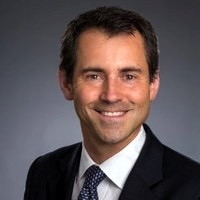By Pam Hersh
In the spring of 2019, Dr. Craig Gronczewski, the chair of Emergency Services at Penn Medicine Princeton Health, was focused on operational improvement at the hospital that had become part of the University of Pennsylvania Health System in January 2018.
With an MD from Rutgers Robert Wood Johnson Medical School and an MBA from the Wharton School at the University of Pennsylvania, Craig’s imperative one year ago was, in his words, “implementing clinical best practices, positioning the emergency department towards a frontier in operational effectiveness, and putting patient experience front and center.” Among other things, the doctors and administrators had completed the integration and implementation of a new state-of-the-art electronic medical records system for the entire campus. Although extremely complex and important to the internal workings of the hospital, the initiatives proceeded without any notice from the outside world.
In the spring of 2020, Dr. Craig Gronczewski, still the emergency room chair, as well as the just appointed associate chief medical officer of Penn Medicine Princeton Health, was focused on one thing only: stopping the devastation of COVID-19, a crisis being noticed by – and inescapably jarring – the outside world.
The current COVID situation, he said, is unlike any other operational or medical challenge he has faced since he started working 20 years ago. “I want to emphasize the seriousness of this virus. It is not just the flu. I bristle when I hear that from people. … This disease attacks the body in unprecedented ways. No one should underestimate the destructive power of COVID-19.
“When I go home and actually have time to think for a minute about my own feelings – my own family – I get to process the emotional impact this pandemic has had on our frontline workers. Despite the feelings of anxiety and exhaustion that may sometimes set in, my colleagues and I still go on. As Nelson Mandela once said, ‘Courage is the triumph over fear.’ I’ve been absolutely moved by all the courageous healthcare workers that I’ve been honored to work alongside. I know of physicians and nurses who are home with COVID-19, and they ask me when they can get back to caring for patients once they’ve recovered. Their commitment is humbling.
“Fighting back on the outbreak has been the most important and demanding part of my career. It’s also helped me define my purpose. This is why I am here. This is what I trained for in emergency medicine. This is why I went into emergency medicine. … On one hand, no one signed up for this. But on the other hand, this is exactly what we – all of these incredible people working with me – signed up for. It is no random reason why we are here doing this. Our skills, our values, our personalities brought us to these jobs in the first place. So yes, the scope of this crisis is unimaginable, but our ability and desire to deal with it is why we are here.”
Craig reported that recently he has seen a leveling of new COVID-19 cases. Four weeks ago, the forecast for hospitalizations ranged from challenging to unmanageable for New Jersey. Now it is challenging, but manageable.
“Princeton Medical Center and Penn have amazing leadership. The hospital has been and remains well positioned to manage it all. The deaths however, no matter the final count, will remain too many.”
The goal in our community is to flatten the curve. The goal in the hospital, Craig said, is to stay ahead of that curve, regardless of what its eventual shape may be. “We will never let our guard down. We will continue to prepare for the future in terms of operational strategy and equipment. The use of a tent outside of the emergency room to screen for and isolate people with respiratory ailments has worked very well for the hospital as a way to mitigate the risk of exposure to staff and patients. After all, we still must be ready to treat other medical situations, i.e., childbirth, fractures, strokes, heart attacks, cancer-related emergencies.”
Sept. 11, 2001 (9/11), changed emergency medicine in a profound way, Craig said. 9/11 occurred the first year he was in practice. From that point on, the training for a mass casualty incident, whether caused by man or nature, has been all Craig has known. COVID-19 is mass casualty, but one that lasts – not a day, not a week, not a month, but many, many months.
“Some researchers are saying we have a very long way to go. And until we have a vaccine for this particular virus and even after, we never can be complacent as far as preparations. Who knows when the next strain will infect communities around the world?”
He asked the community to do its part as far as responding to COVID-19. “It sounds cliché at this point, but hand washing, social distancing and masking are crucial.
“We never can let our guard down. This COVID-19 pandemic experience will change emergency medical preparedness similarly to the way 9/11 transformed emergency medical preparedness. Hospitals throughout the country from this point forward will be better prepared as far as equipment, training and operational strategies.”
One year ago, I contacted Craig, with whom I worked several years ago at Princeton HealthCare System, when he wrote a column for the Princeton Packet about summertime preparedness. Summertime, he warned, is a time when emergency room visits spike – with patients suffering medical crises from heat exhaustion, fireworks, severe sunburn, bites and stings, poison ivy and drowning. I texted him to say thank you for the good advice. Now I want to text everyday to say in all caps THANK YOU to him and his co-workers for their inspiring efforts. I really look forward to the time when I am texting him, once again, about sunburns.

